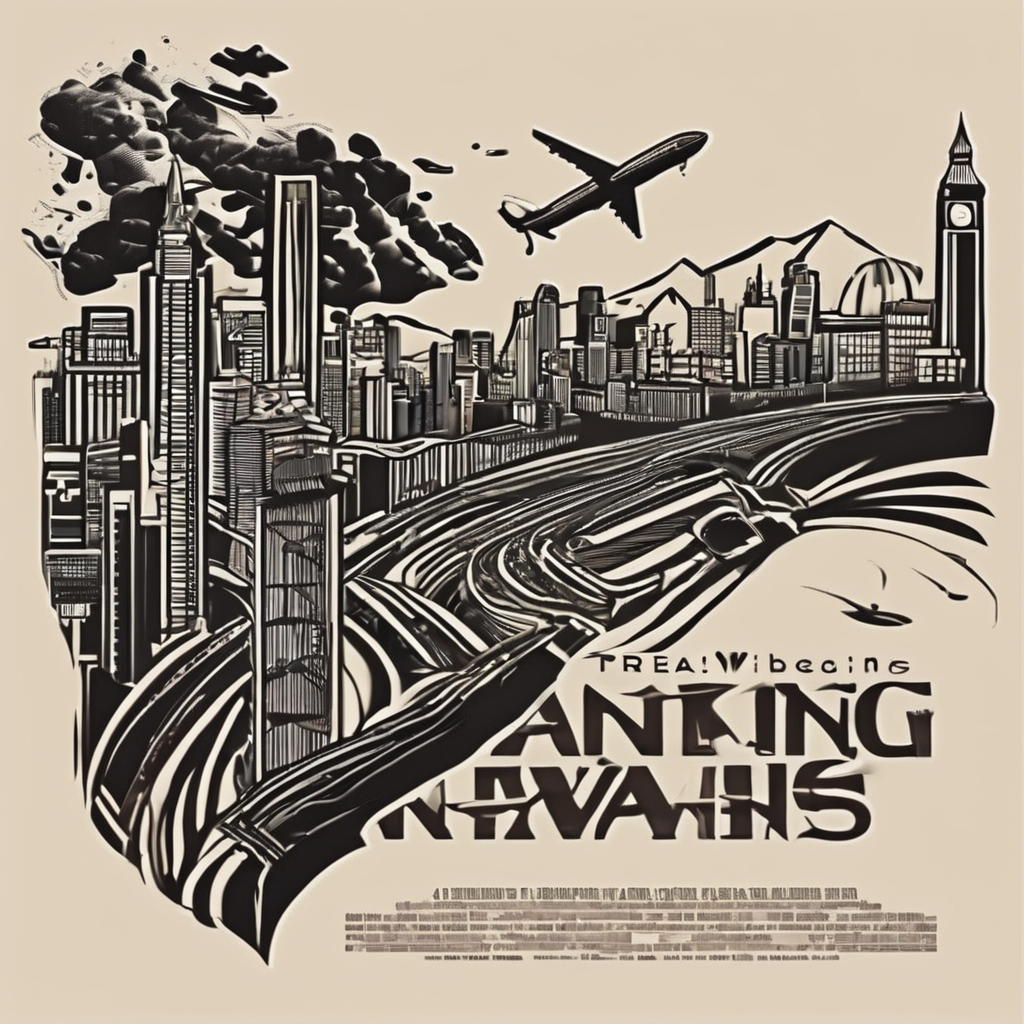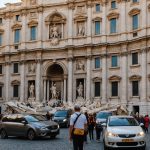Discover Top Attractions in Rome: A Complete Exploration Guide
If you are planning a trip to Rome, you are in for a treat. This ancient city is filled with historical landmarks, artistic treasures, and a vibrant culture that will leave you in awe. Here is a comprehensive guide to help you explore the top attractions in Rome.
Planning Your Trip to Rome
Before diving into the attractions, it’s essential to plan your trip effectively. Here are some tips to get you started:
Additional reading : 5 Landscape Design Tips for Beginners
- When to Visit: Rome is a year-round destination, but the best time to visit is during the spring (April to June) and autumn (September to November) when the weather is pleasant and the crowds are smaller.
- Getting Around: Rome has a well-developed public transportation system, including a metro, buses, and trams. You can also use the Rome Tourist Card, which includes free public transport and skip-the-line access to many attractions.
For a more detailed guide on planning your trip, you can check out this ultimate guide to Rome.
Day 1: Exploring the Historic Center
Fontaine de Trévi and Panthéon
Start your day at the Fontaine de Trévi, one of the most famous fountains in the world. According to legend, if you throw a coin into the fountain, you will one day return to Rome. From there, head to the Panthéon, a magnificently preserved ancient Roman temple with an impressive dome designed by Michelangelo.
Also to see : Which UK locations offer the most comprehensive guided tours on the history of British public transportation?
Piazza di Spagna and Villa Borghese
After visiting the Panthéon, make your way to the Piazza di Spagna, known for its beautiful Spanish Steps and the Fontaine de Barcaccia. Take a stroll up the steps to the Trinité-des-Monts church for a stunning view of the square.
In the afternoon, visit Villa Borghese, Rome’s largest public park. You can walk, bike, or even take a leisurely boat ride on the lake. The park is also home to the Galerie Borghese, a museum housing some of the most exquisite art pieces in Rome, including works by Bernini and Caravaggio. Remember to book your tickets in advance as the number of visitors is limited.
Day 2: Ancient Rome and the Vatican
Colisée, Forum Romain, and Musées du Capitole
Begin your day with a visit to the Colisée, one of Rome’s most iconic landmarks and a testament to the engineering prowess of the ancient Romans. The Colisée is part of a larger archaeological complex that includes the Forum Romain and the Mont Palatin. These sites are included in the same ticket, so you can explore all three without additional cost.
After exploring the ancient ruins, head to the Musées du Capitole, located just a few minutes away from the Forum Romain. These museums are renowned for their diverse collection of artworks and artifacts from various centuries, offering a rich glimpse into Rome’s history.
Château Saint Ange and Trastevere
In the afternoon, visit the Château Saint Ange, a fortress with a rich history dating back to the 2nd century AD. From there, cross the Tiber Island to the charming neighborhood of Trastevere, known for its narrow streets, quaint shops, and vibrant nightlife. Enjoy a traditional Italian dinner in one of the many restaurants in the area.
Day 3: The Vatican and More
Musées du Vatican and Basilique Saint Pierre
Dedicate your morning to exploring the Musées du Vatican, which house some of the world’s most famous artworks, including Michelangelo’s ceiling in the Chapelle Sixtine. Be prepared for long lines, but the experience is well worth the wait. Don’t forget to visit the Basilique Saint Pierre, the largest Christian church in the world, located within the Vatican City.
Galerie Borghese and Piazza Navona
In the afternoon, if you haven’t already visited the Galerie Borghese, this is a good time to do so. Alternatively, you can explore Piazza Navona, one of Rome’s most beautiful squares, featuring three stunning fountains, including the Fontana dei Quattro Fiumi, and the Église Sainte-Agnès-en-Agone. During December, the square transforms into a magical Christmas market.
Other Must-See Attractions
Le Forum Romain and Mont Palatin
Even if you’ve visited the Colisée, it’s worth spending more time exploring the Forum Romain and the Mont Palatin. These sites offer a glimpse into ancient Rome’s daily life, with numerous basiliques, monuments, and temples to discover. Remember that the ticket for the Colisée includes access to these sites as well.
La Piazza del Campidoglio
Located near the Forum Romain, Piazza del Campidoglio is a beautiful square designed by Michelangelo. It is surrounded by the Musées du Capitole and offers a panoramic view of Rome from the top of the Vittorio Emanuele II monument.
Practical Tips for Your Visit
- Skip-the-Line Tickets: Consider purchasing skip-the-line tickets or guided tours to avoid long queues, especially during peak season.
- Early Mornings or Late Evenings: Visit popular sites early in the morning or late in the evening to avoid the crowds.
- Comfortable Shoes: Wear comfortable shoes as you will be doing a lot of walking.
- Stay Hydrated: Bring water and stay hydrated, especially during the summer months.
Special Events and Jubilé 2025
If you are planning to visit Rome in 2025, be prepared for the Jubilé 2025, a significant event that attracts millions of pilgrims and tourists. Here are a few things to keep in mind:
- Record Crowds: Expect large crowds around major attractions like the Colisée, Musées du Vatican, and Galerie Borghese.
- Renovations and Improvements: Rome has undergone significant renovations to prepare for the influx of visitors, including improvements in public transport and tourist infrastructure.
- Cultural Events: The Jubilé will feature various cultural events, exhibitions, and concerts, adding an artistic dimension to your visit.
Detailed Itinerary
Here is a detailed itinerary for your 3-day trip to Rome:
| Day | Morning | Afternoon |
|---|---|---|
| Day 1 | Fontaine de Trévi, Panthéon, Piazza di Spagna | Villa Borghese, Galerie Borghese |
| Day 2 | Colisée, Forum Romain, Musées du Capitole | Château Saint Ange, Trastevere |
| Day 3 | Musées du Vatican, Basilique Saint Pierre | Galerie Borghese, Piazza Navona |
Key Attractions at a Glance
Here is a table summarizing some of the key attractions in Rome:
| Attraction | Location | Key Features |
|---|---|---|
| Colisée | Center of Rome | Ancient amphitheater, historical significance |
| Forum Romain | Near Colisée | Ancient ruins, historical significance |
| Musées du Vatican | Vatican City | Chapelle Sixtine, extensive art collection |
| Galerie Borghese | Villa Borghese | Works by Bernini and Caravaggio, beautiful gardens |
| Piazza Navona | Historic Center | Three fountains, Église Sainte-Agnès-en-Agone |
| Panthéon | Historic Center | Ancient temple, Michelangelo’s dome |
| Villa Borghese | North of Historic Center | Public park, beautiful gardens, lake |
Tips for Visiting Rome
Here are some additional tips to make your visit to Rome more enjoyable:
- Learn Some Italian: While many Romans speak English, learning a few basic Italian phrases can go a long way in enhancing your experience.
- Respect Local Customs: Be respectful of local customs, especially when visiting churches or other religious sites.
- Try Local Cuisine: Rome is famous for its cuisine. Be sure to try some of the local specialties like carbonara, amatriciana, and pizza romana.
Rome is a city that has something for everyone – history, art, culture, and cuisine. With this guide, you are well-prepared to explore the top attractions in Rome and make the most of your trip. Whether you are interested in ancient ruins, artistic masterpieces, or simply soaking up the vibrant atmosphere, Rome is a destination that will leave you with unforgettable memories.











